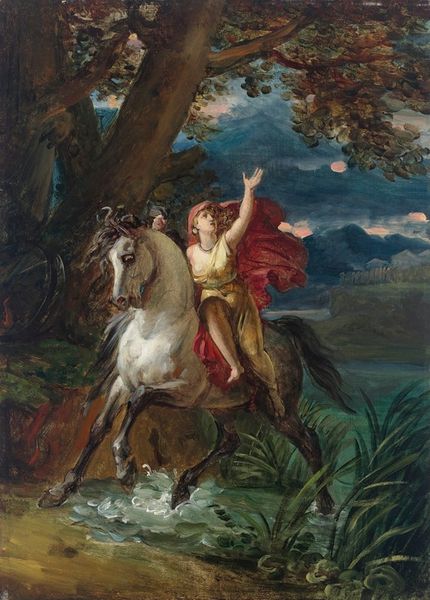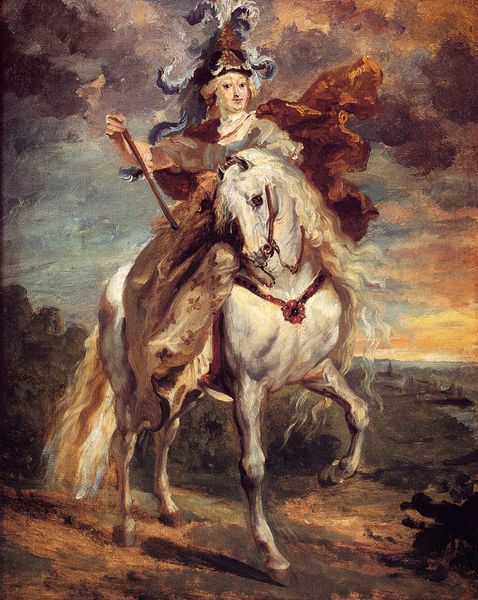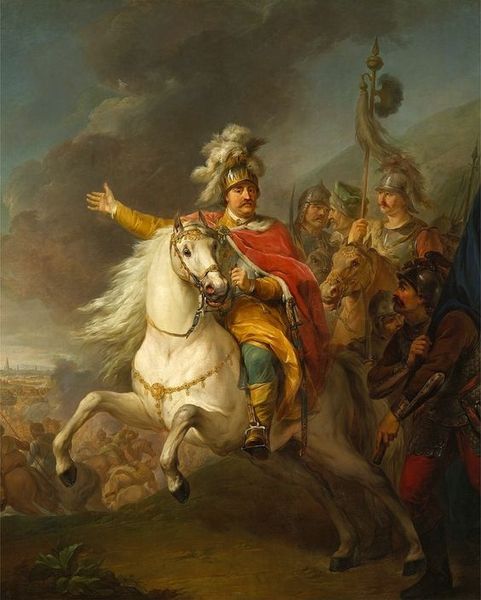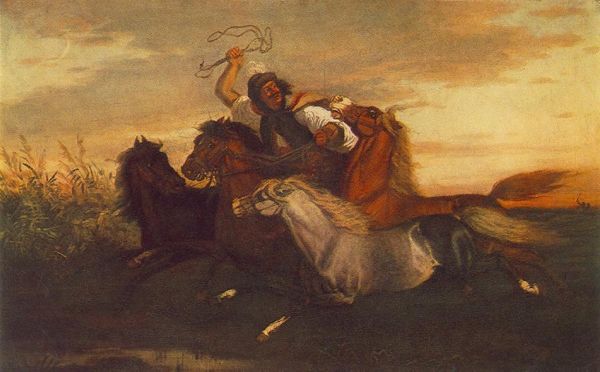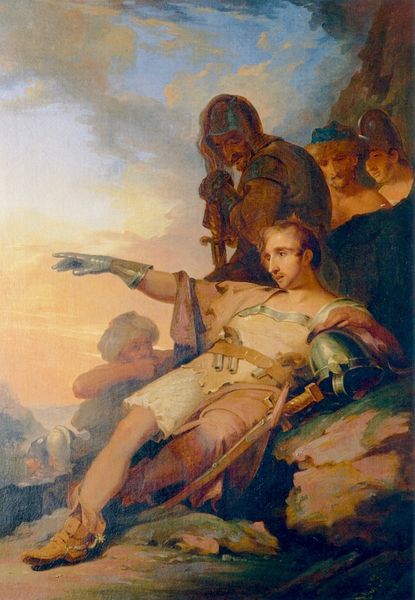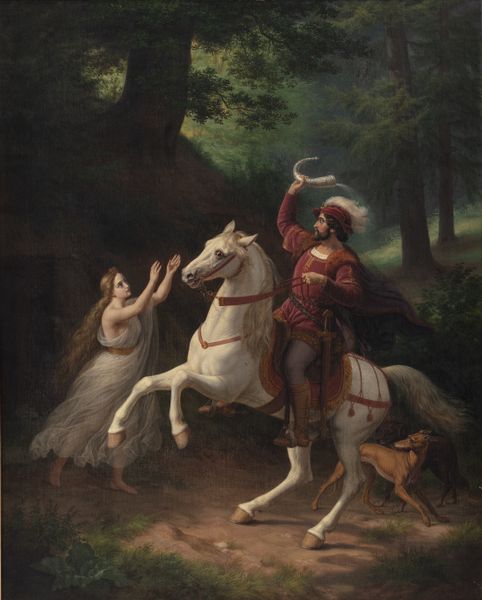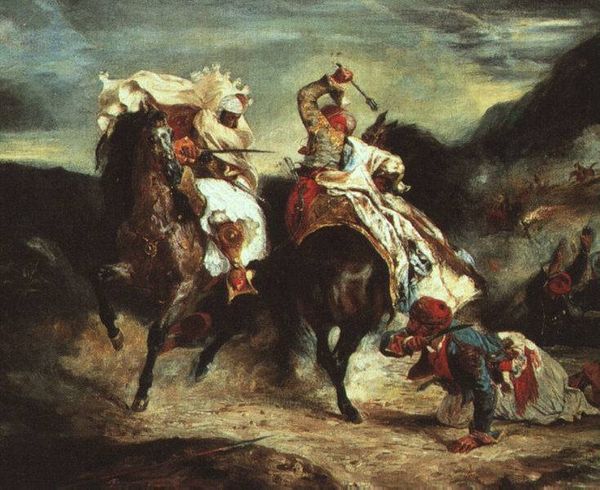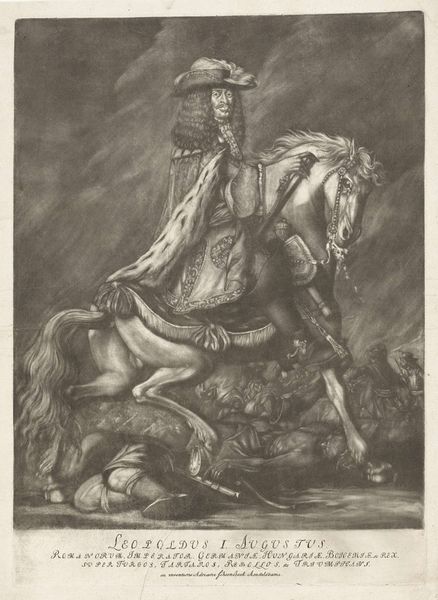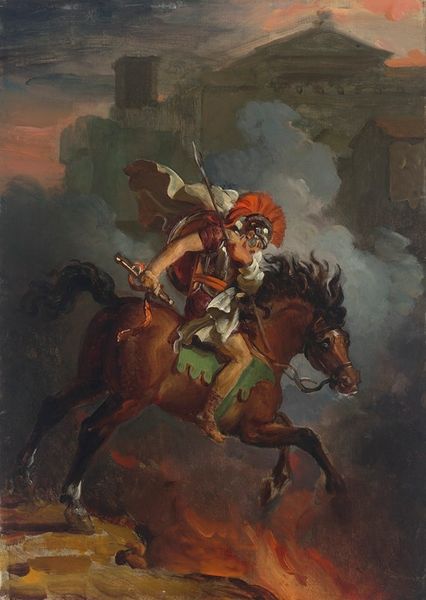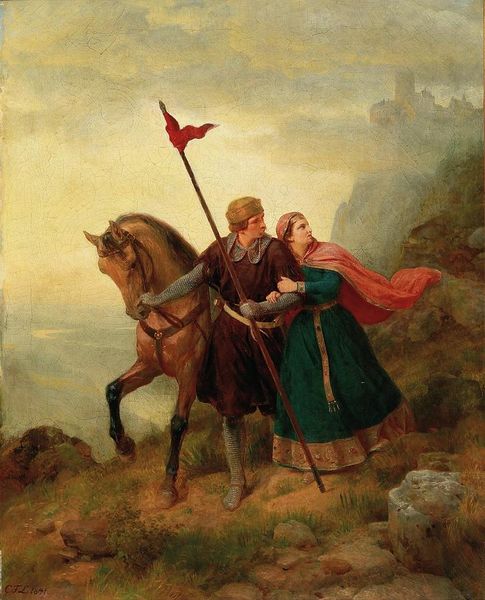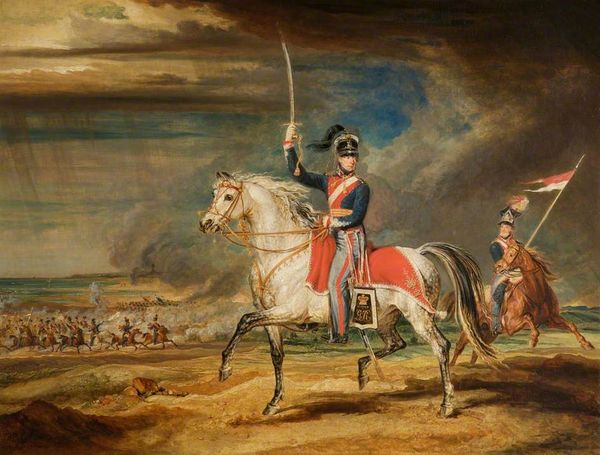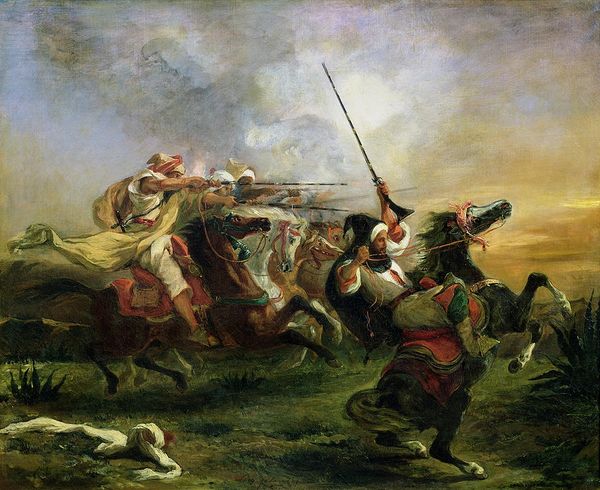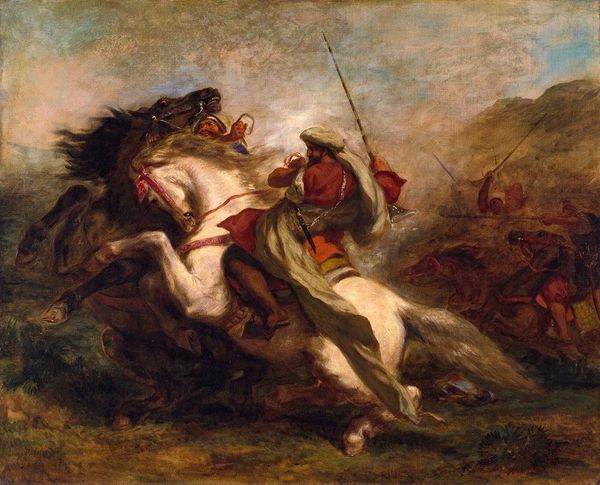
painting, oil-paint
#
portrait
#
figurative
#
painting
#
oil-paint
#
landscape
#
figuration
#
oil painting
#
romanticism
#
animal portrait
#
genre-painting
#
history-painting
Copyright: Public Domain: Artvee
Curator: Here we have Horace Vernet's "An Algerian Lady Hawking," painted in 1839. It’s an oil painting, quite large, showcasing a woman on horseback with a falcon. Editor: It strikes me as quite romantic. There's a real drama in the light and the sweeping landscape; very theatrical. The horse and its rider look to be central to the visual production. Curator: Precisely. Vernet, you see, was deeply involved in the imagery and, more broadly, the socio-political contexts of French colonialism. He wasn't simply documenting; he was creating and propagating specific visual narratives. How do you interpret this 'Algerian Lady'? Editor: The opulence is undeniable. Look at the embroidery on the horse's saddle blanket, the quality of the white linen fabric, that gold brocade. These materials speak volumes about her status and access to trade. The choice of oil paint allowed the artist to mimic the texture of real items, increasing a viewer’s awe. Curator: Exactly. It prompts the question of access. For whom was this image crafted, and what did it communicate to its original audience? Was it an attempt to romanticize colonial endeavors, masking the violence with exoticism and wealth? Editor: That is part of what makes it so interesting and maybe troublesome for modern eyes. What kind of labor was behind each item and at what price? It seems like the painting becomes an item up for debate in terms of power relations. Curator: This painting allows us to question those established narratives. And by examining the materials, their origins, and their representations, we can uncover the labor and the exploitation inherent in creating this singular romantic image. Editor: I agree; the details here open pathways for critical thinking regarding this era. Curator: Ultimately, understanding Vernet’s process allows us to re-evaluate his motives for producing this painting, moving it away from only appreciating it aesthetically. Editor: I'm leaving with a greater appreciation for the painting's textures. It certainly creates further engagement to understand its complicated implications.
Comments
No comments
Be the first to comment and join the conversation on the ultimate creative platform.
